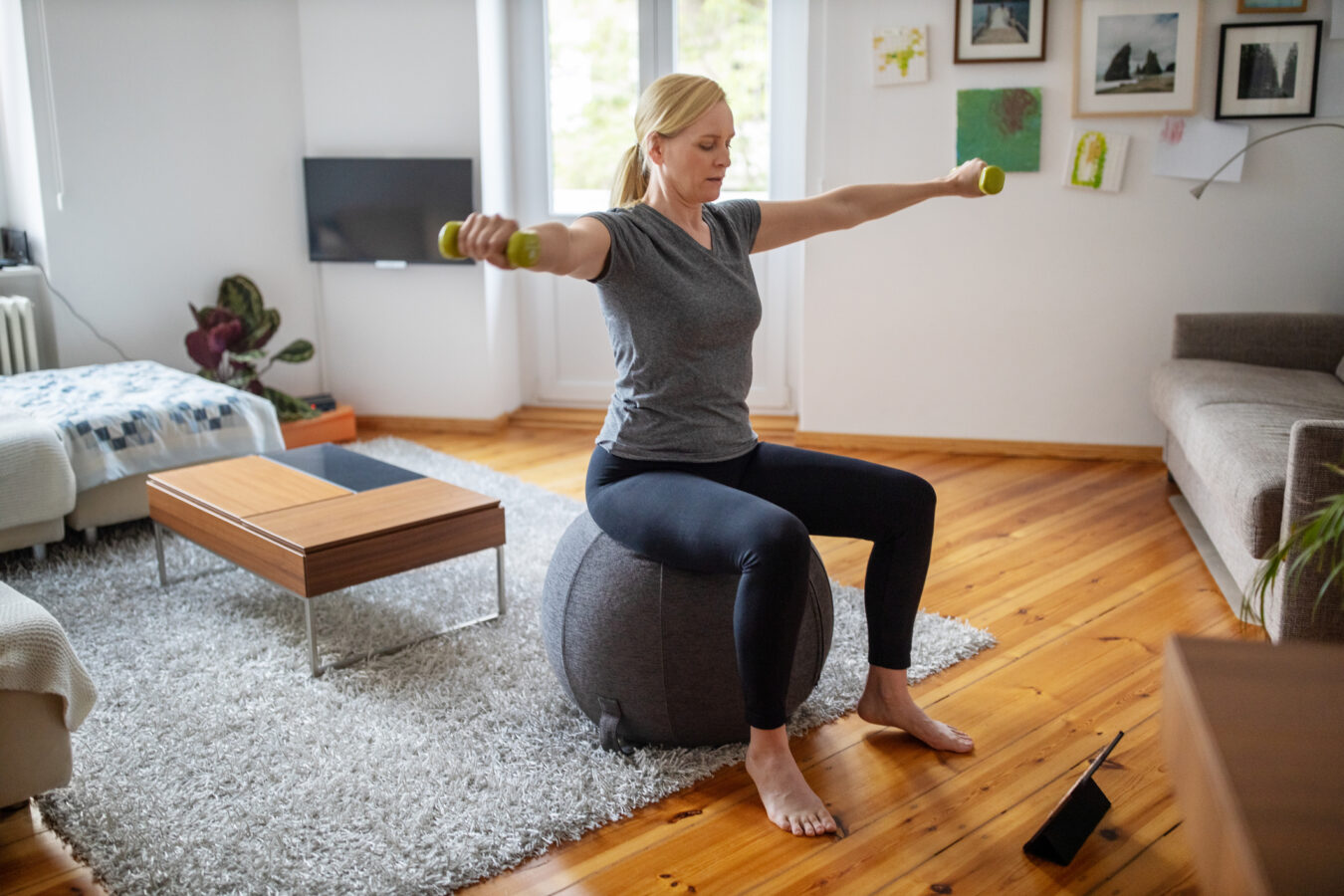
It is outside of a physical therapist’s scope of practice to prescribe medication. But as movement specialists, we can recommend therapeutic exercises to do at home so that patients maintain active lifestyles. Very often, what you do at home is just as beneficial as the work you do with your physical therapist in the clinic.
Learn more about the benefits of a physical therapy home exercise program to help you meet and maintain your physical therapy goals.
A home exercise program (HEP) is a customized set of therapeutic exercises that a physical therapist teaches their patient to be completed at home. These exercises are a kind of “homework” that helps patients reach their physical therapy goals and feel and/or move better for the long-term.
Your HEP will most likely be prescribed on the first day and be geared toward your goals and the treatment that made you feel and/or move better. For example, if the radiating symptoms from your low back lessened after treatment on your back, your physical therapist will send you home with an activity to reinforce that movement on day one— just like a school teacher assigns homework to support the instruction happening in the classroom.
Time in the physical therapy clinic is limited of course, and you may receive a lot of information during your session. It is not unusual to go home and forget what you’ve learned.
To help you remember, your physical therapist will teach you each exercise and provide instructions on a take-home piece of paper that also includes frequency, duration, and number of sets and reps so you know what is expected of you.
Some physical therapists offer telehealth physical therapy, or “virtual PT” which allows them to see you in your home environment. They can guide you through your HEP in your own space and visually assess your progress since your last session as well. Research also shows patients are more likely to comply with HEPs with the use of mobile apps for the phone or tablet. You can ask your physical therapist if that is available to you.
A physical therapy HEP offers many short- and long-term benefits.
HEPs help patients:
Yes. As you improve and physical therapy treatment progresses, your HEP should too. If you are still completing the same exercises three weeks after therapy, your HEP needs to be updated to reflect your progress. Don’t hesitate to ask your therapist if your HEP is still appropriate and what you should continue to do, stop, or add to your program.
Skipping your physical therapy exercises will only delay your results. Staying motivated and adhering to your HEP can be difficult, but it will likely speed your pain relief or return to function. Always be honest with your physical therapist about your progress so they can adjust your treatment plan accordingly. A productive collaboration between the patient and physical therapist is one of the best tools for your success.
Possibly. The guidelines for an HEP after physical therapy vary from person to person. Your physical therapist should provide you with the tools to be independent in managing any residual symptoms and to keep your body healthy. The discharge HEP should also provide you with guidance to manage your condition in the event of symptom exacerbation. However, some individuals may not need to continue their program if they fully achieve their goals.
It is important to understand that your symptoms may return, particularly in the case of low-back pain. Some patients also benefit from ‘booster sessions’ which are periodic check ups after discharge to update their HEP and continue to progress their functional levels.
To schedule a screening to assess your condition or symptoms, find a physical therapy clinic near you.